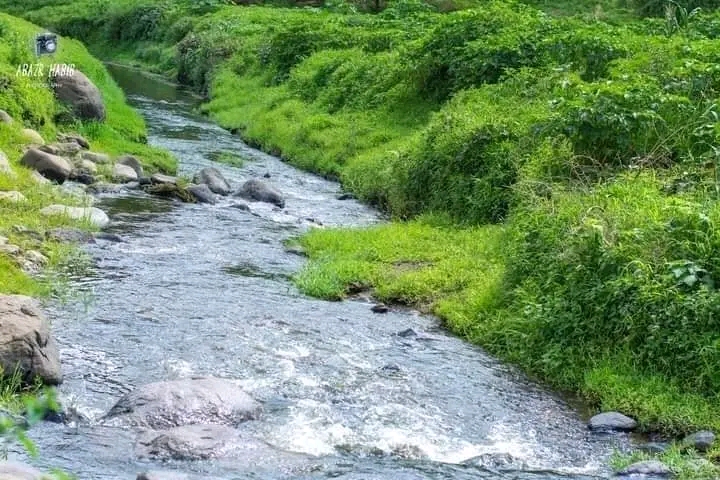Living Traditions: Engaging with the Toposa Community in Kapoeta, South Sudan
Experience the vibrant cultural heritage of the Toposa people in Kapoeta, South Sudan. This immersive journey invites travelers to connect with indigenous traditions, witness evocative craftsmanship, and explore resilient communities in a landscape shaped by enduring natural forces.
Wear Durable, Breathable Footwear
The terrain around Kapoeta is uneven with rocky patches and dried riverbeds; shoes offering ankle support and ventilation keep you protected and comfortable.
Respect Local Customs
Always ask permission before taking photos and dress modestly to honor Toposa traditions and build trust during village visits.
Stay Hydrated and Carry Water
With the dry heat and arid environment, consistently drinking water is vital to avoid dehydration during exploration.
Plan Early in the Day
Morning excursions avoid peak heat, making walks more enjoyable and less taxing physically amid the semi-arid climate.
Living Traditions: Engaging with the Toposa Community in Kapoeta, South Sudan
In the semi-arid lands surrounding Kapoeta, South Sudan, the Toposa community thrives with a cultural vibrancy as fierce and enduring as the landscape they inhabit. Their world is one shaped by the rainfall’s rhythm, the grazing patterns of their cattle, and the rituals handed down through generations—inviting travelers to witness a way of life deeply connected to the earth.
Arriving in Kapoeta, the gateway town to the Toposa, the first sense is the heat pressing like an ancient force, the red earth dust daring you to step into a different pace of life. To engage with the Toposa is not merely to observe but to participate in a cultural exchange where hospitality is measured by shared stories, handcrafted jewelry, and the cadence of songs echoing around open fires.
Visitors often begin with guided visits to the nearby villages, where the terrain challenges and rewards. The hike across dry plains and undulating hills covers roughly 15 kilometers round-trip with a gentle elevation gain of around 200 meters. The ground, cracked by sun and iced by evening chills, demands sturdy footwear and careful pacing; the trails are informal, blending into the environment rather than imposing upon it. Along the path, termite mounds stand like nature’s sculptures, and the hardy acacia trees offer rare but welcome shade.
Once in the villages, practical guidance is essential: respecting local customs such as modest dressing, asking permission before photographing individuals, and understanding that the Toposa’s relationship with their cattle is sacred. Engage with elders to hear oral histories that reveal both the hardship and resilience defining their identity. Young artisans display beadwork that not only decorates but signals social status and milestones.
Timing your visit between November and February ensures traveling when the landscape has receded from the scalding rains, allowing cooler mornings and more comfortable days. Hydration is critical here; the land is a living challenge, and the Toposa live alongside it with respect rather than dominance.
This cultural adventure is an exercise in humility and attentiveness, where every face, every gesture, speaks to a fierce self-possession. It’s a journey where the traveler learns the rhythms of a people who live in close dialogue with their environment, whose vibrant traditions remind us that cultural heritage is not a static relic but a daily act of survival and celebration.
Nearby Trips
All Adventures
Boat Charters
Water Activities
Adventures near Kapoeta
Discover the unique and memorable adventures that make Kapoeta special.
Frequently Asked Questions
What is the best way to approach the Toposa community respectfully?
Start by arranging visits through a local guide who understands cultural protocols. Dress modestly, ask before photographing, and show genuine interest in listening rather than just observing.
Are there any safety concerns when visiting the Toposa villages?
The area is generally safe, but visitors should remain aware of local conditions, avoid traveling at night, and follow guidance from respected community liaisons.
How physically demanding is visiting the Toposa community?
Moderate fitness is needed to navigate informal dirt paths and semi-arid terrain over several kilometers, with some variation in elevation.
What cultural activities can visitors participate in?
Visitors can join traditional dances, witness beadwork crafting, hear oral histories from elders, and observe cattle ceremonies pivotal to Toposa life.
Is it necessary to bring special gear or supplies for the visit?
Bring sun protection, ample water, sturdy shoes, and light clothing suitable for hot days and cooler nights to remain comfortable throughout the visit.
When is the best time to visit the Toposa community for cultural engagement?
The winter months from November to February offer comfortable weather, reduced insects, and the most accessible villages for travelers.
Recommended Gear
Sturdy Hiking Boots
Protects feet against sharp stones and uneven paths while providing ankle support.
Sun Protection Hat
Shields from intense sun rays, essential for preventing heatstroke and sunburn.
Water Bottle with Filter
Ensures hydration with access to potable water, critical in dry conditions.
Lightweight Long-Sleeve Shirt
Provides sun protection while allowing breathability to reduce overheating.
Local Insights
Hidden Gems
- "Viewpoint overlooking the seasonal Narus River — a quiet spot where water pulses through the dry landscape seasonally."
- "Traditional Toposa hearths where cooking fires light up evening storytelling ceremonies."
Wildlife
- "Monitor lizards sunning on rocks near village edges."
- "Several species of resilient birds, including the red-billed hornbill who calls the region home."
History
"The Toposa have historically navigated both internal and cross-border conflicts, preserving their cultural autonomy through adaptive pastoralist traditions dating back centuries."
